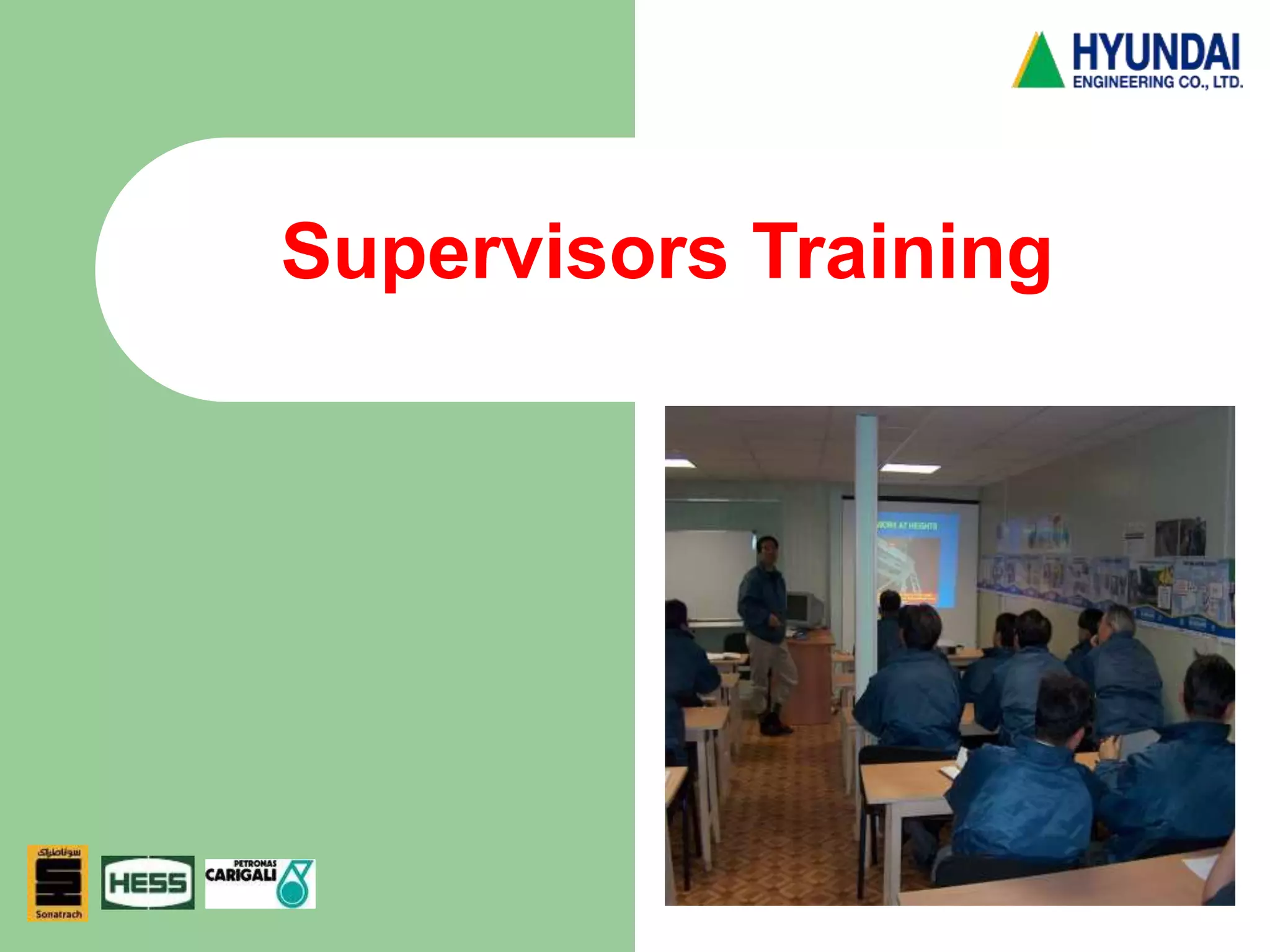This document provides an outline for a supervisor training on construction safety. It discusses the roles and responsibilities of supervisors in accident prevention. Supervisors are responsible for controlling the work environment and activities of their subordinates to eliminate unsafe conditions and acts. Accidents typically arise due to a lack of control at the supervision level. The training covers key construction safety areas, safety auditing, and emphasizes that planning and preparing for safety is essential and must be integrated from the start, not treated as an afterthought. Method statements are an effective tool to plan sequences of activities and identify necessary safety controls.




























